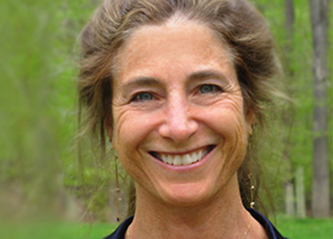NICABM Experts
Tara Brach, PhD
Tara Brach, PhD, is a psychologist, beloved mindfulness teacher, and founder of the Insight Meditation Community of Washington.
Her work incorporates lovingkindness, radical acceptance, and compassion practices to help clients find emotional healing and inner-peace.

Tara is also the author of several books, including Radical Compassion.[1]
As a long-time spiritual guide, she has a wealth of wisdom to share about the human condition . . .
False Refuges, Soul Sadness, and the Trance of Unworthiness
From a young age, we all receive messages from our families. Some of these messages might be positive, but many can also be negative – and this is particularly the case if a client has experienced trauma.
On top of that, we also can receive these negative messages from our culture and society. When it comes to the Western world, Tara argues that the hyper-individualistic nature of this culture can lead us to become detached from ourselves and disconnected from others.
When we internalize these negative messages and values, we can get sucked into what Tara calls the Trance of Unworthiness – a state of walking through life constantly feeling inadequate, defective, shameful, discontent with ourselves, and never good enough.
For clients who are stuck in this Trance of Unworthiness, this can prevent them from having intimate connections or feeling a sense of belonging.
As a result, these clients might feel as if they constantly need to prove themselves – whether that be in a relationship, in their career, or even to themselves.
To distract ourselves from this pain, many of us end up turning to a number of vices – Tara calls these false refuges.
In her own words,
“False refuges work in a temporary way to help us feel better, but in the long run they create more suffering. A true refuge has to be truth – it has to be something that is right here, in the present moment, and part of our being. I consider true refuge the awareness and love that is right here within us that we learn to find access to – that is what enables us to feel at home in our lives.”
– Tara Brach, PhD, Applying Mindfulness to Your Clinical Work
According to Tara, false refuges might look like:
- Ruminating
- Judging others and ourselves
- Being our own worst critics
- Avoiding confrontation or difficult situations
- Over-accomodating others out of fear of rejection, also known as the please and appease (or fawn) response to trauma
- Endless self-improvement journeys
- Workaholism, or being a perfectionist
- Playing things safe instead of taking risks (or what Tara calls, being driven by the Trance of Fear)
- Living in the future instead of the present
- Overeating
- Substance abuse
If a client has been stuck in the Trance of Unworthiness and clinging to false refuges for some time, they might eventually experience deep feelings of grief – grief for having lost years of their life to self-limiting beliefs.
Tara calls this “soul sadness.”
As she puts it,
“Behind the lines in many of our psyches there’s a sense of disappointment that we’re not always feeling that we’re being true to ourselves in some way. And what is it that really tugs us away from being true to ourselves is that there’s some vulnerability or insecurity that makes it so we can’t really trust ourselves. We’re inclined to take the cues and be who we think we should be, rather than listening and responding from our hearts.”
– Tara Brach, PhD, Awakening Your Fearless Heart
In other words, we feel immense grief for what could have been – for our unlived lives.
So how can you help clients heal this soul sadness, shed their false refuges, and break free from the Trance of Unworthiness?
According to Tara, the first step is Radical Acceptance.
What is Radical Acceptance?
The concept of Radical Acceptance says that only until we unconditionally accept our past experiences and current situation can we begin to change, progress, and grow.
As Tara says,
“One of the things about being stuck is we usually don’t like ourselves and we judge ourselves for being stuck. So, the first thing about getting unstuck is to forgive the stuckness, because it gets locked and we get imprisoned in it if we’ve added a layer of shaming.”
– Tara Brach, PhD, How to Work with Clients Who Are Stuck
There are two components of Radical Acceptance:
- Clear seeing – This means having a clear and genuine awareness of our experience.
- Compassion – This entails holding our experiences and how they make us feel with loving compassion.
However, there are a few common misconceptions about Radical Acceptance. Tara emphasizes that Radical Acceptance is NOT:
- Resigning to or settling for our current selves
- Defining ourselves by our limitations
- Self-indulgence
- Something that will make us passive
In other words, you might think of Radical Acceptance as seeking truth and welcoming whatever comes with complete acceptance and compassion.
And according to Tara, here’s how you might help a client cultivate this philosophy . . .
Three Steps to Radical Acceptance
In her book Radical Acceptance,[2] Tara lays out these three steps that can help clients awaken from the Trance of Unworthiness and develop Radical Acceptance:
- The Sacred Pause – Whenever a client begins to feel unpleasant emotions rising in them, instead of letting them turn to the first form of distraction, we want to have them pause, name what they’re experiencing, and accept the feeling.
- Tea with Mara – As distressing emotions continue to arise, we want clients to welcome these feelings with unconditional warmth and curiosity. To illustrate this, Tara has alluded to the Buddhist myth of the Buddha having tea with Mara – Mara being our “shadow side,” or the parts of us that hold anger, jealousy, self-doubt, and other negative traits that we might shun. In this myth, instead of fighting Mara, the Buddha invites him to tea. This is a story you might share with your client to show the importance of accepting, rather than banishing, the parts of us that are flawed.
- Embodied Immediacy – Once your client has paused and identified what they’re feeling in the present moment, have them get in touch with their body and notice the physical sensations they’re experiencing.
Much of Radical Acceptance involves unconditional compassion for ourselves and others. In fact, this is the other tenet to healing that Tara emphasizes: Radical Compassion.
What is Radical Compassion?
Tara describes Radical Compassion as a form of compassion that:
- Is felt in the body
- Is all-inclusive (meaning, we have compassion for all human beings, even those we disagree with or who have harmed us)
- Prompts us to actively extend tenderness to others
Tara says that one way we can cultivate Radical Compassion is through mindfulness practices like meditation.
Through meditation, your client can move away from resorting to false refuges and instead seek out true refuge – or as Tara puts it,
“Most meditation trainings are trainings to find true refuge. Meditation trainings help us calm the busyness of our minds that keeps telling us things are going to go wrong. Meditation trainings bring us back to a place of aliveness and balance that is right here. Any meditation practice that has to do with presence would be a way back to true refuge.”
– Tara Brach, PhD, Applying Mindfulness to Your Clinical Work
In her teachings, Tara commonly uses one powerful practice that can help clients develop Radical Compassion – that is, the RAIN meditation.
What is the RAIN Meditation Technique?
One of Tara’s most well-known practices is RAIN,[3] an acronym that can help us pause when reactivity threatens to take over.
According to Tara, when clients find themselves on the brink of reactivity, we want to have them:
- Recognize what is happening – This means consciously acknowledging the thoughts, behaviors, and feelings that are affecting them. You might have a client do this by silently reflecting to themselves, writing about their experience, or even speaking it aloud. This simple act of naming an emotion can be enough to take its power away.
- Allow life to be, just as it is – Despite any discomfort that arises, we want to encourage clients to pause and sit with their emotions, without trying to fix anything. Tara says it can help to have clients tell their emotions, “Yes, it’s okay,” as they arise.
- Investigate your inner-state – Encourage your client to call upon their curiosity and tap into part of themselves that can look at a situation with interest, care, and gentle attention. Here, you want to encourage your client to step away from thinking and get in touch with their bodily response.
- Nurture with self-compassion – At this point, have your client reach deep inside, past the parts of themselves that they dislike, and find the most tender and wounded parts. Then, encourage them to extend a gesture of reassurance or care to these parts. You might have them say, “I’m sorry, and I love you.” Often, such a gesture is all these wounded parts need.
This four-step exercise can help clients stay present when uncomfortable feelings come to surface, cultivate self-compassion, and break free from self-limiting beliefs.
References
For More Information . . .
Check out a course featuring Tara Brach, PhD:

How to Apply Mindfulness to Your Clinical Work
12 CE/CME Credits Available

How to Work With Clients Who Are Stuck
4 CE/CME Credits Available
Find out more about how Tara Brach, PhD, works with mindfulness here:

How to Become Who You Want to Be
Helping them trade self-judgment for self-compassion is an essential first step . . .

A Simple Mindfulness Practice to Restore Vitality
When clients lose their sense of aliveness and vitality . . .

The Danger of Turning to “False Refuge”
Overcoming Harmful Patterns with Mindfulness Practice . . .